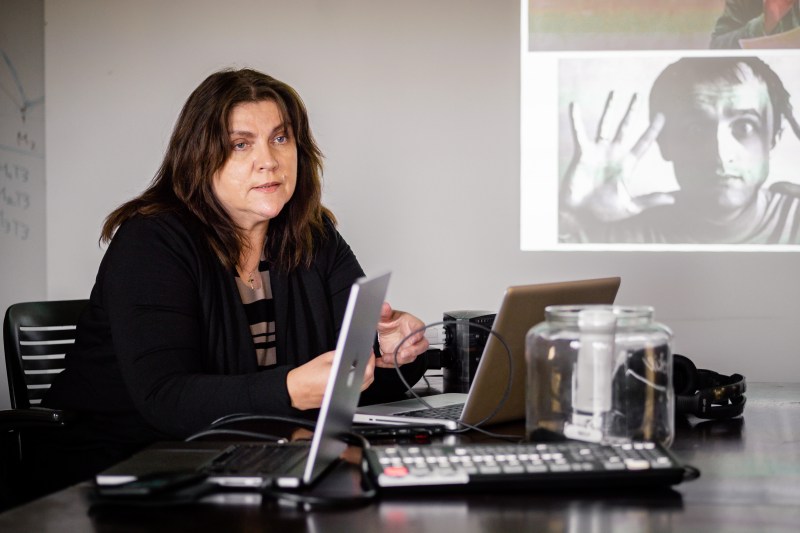On Monday, Stanford students, faculty and members from the Palo Alto community gathered on The Knoll and via Zoom to listen to Ukrainian pianist and composer Ludmila Yurina discuss Ukrainian music and the development of musical culture.
“The Russian invasion of Ukraine forced us to reconsider and to think a lot about the history of Ukrainian culture and music to understand how Russia … tried to change our consciousness and thinking,” Yurina said.
In the past century, Ukrainian composers have taken the country’s art and music in several different directions — such as folklore and traditionalism in the spirit of social realism — many influenced by postmodernism.
Ukrainian music history is intertwined with the history of the communist party of the Soviet Union. Before 1950, Ukrainian music was primarily composed to commemorate anniversaries of revolutions, birthdays of leaders and other events significant to the communist party. Their music was influenced by communist ideology; many pieces composed were celebratory overtures or choral compositions.
Composers from that era include Valentyn Silvestrov, Leonid Hrabovsky, Volodymyr Zagortsev and Vitaliy Hodziatsky, who were not accepted by Soviet ideology and who fought against the communist party. At the beginning of the ’60s, these composers created a group that was routinely criticized by the inner circle of the USSR.
During this period, the 12-tone technique (treating all 12 pitches as equals) became the vehicle for dissident Ukrainian music. Yurina played an arranged excerpt from Silvestrov’s Symphony No. 5 to demonstrate an example of a 12-tone Ukrainian piece from this era.
Another big inspiration for Ukrainian musical practice was folklore, which was embraced by virtually all of Ukraine. Folklore tells narratives about individuals and contributes to passing on traditions. According to Yurina, it strongly influenced the Ukrainian ethos during the era. Composers such as Myroslav Skoryk, Yevhen Stankovych, Lev Kolodub and Volodymyr Zubytskyi were prominent proponents of incorporating folklore in art music.
Yurina then took us through the 1990s, where the evolution of music veered toward Western European influence. It was notably shaped by the independence of Ukraine; the collapse of the USSR allowed for a change in the establishment of Ukrainian music. Limits on composers were eliminated.
“All ideological prohibitions concerning musical creation and culture disappeared,” Yurina said. The new young Ukrainian composers could now become acquainted with styles of music from all around the world.
Ukrainian musicians began traveling all around Europe, exposing themselves to different styles in order to create their own. Some participated in prominent contemporary music festivals. This inspiration deepened Ukrainian composers’ depth of melodic and harmonic understanding, and they began to experiment and form their own national musical identity.
Yurina said that by 2000, one of the biggest influences was the change towards new-century music. Social realism and Soviet traditions still acted as artistic influences, but Ukrainian composers began experimenting with larger orchestral instrumentations. The new generation created an appearance of radical and ultra-radical ideas, incorporating pan-European and even transcontinental aesthetics.
The Orange Revolution in the early 2000s allowed for the development of experimental electronic music, a field now widely represented by Ukrainian composers. Electronic music started to become relevant through new projects and compositions, which included collaborations with foreign performers.
With this evolution, Ukrainian music has reached a new level of recognition. Ukrainian musicians are constantly invited to create and perform music worldwide. Even past 2010, the surge of music and technology has continued through new compositions with new styles from the next generation.
Yurina showed how contemporary music has taken form in Ukraine as a reflection of its political situation. Even though Ukrainian music has changed over the years, cultural heritage, aesthetics and ethnic traditions are still preserved by the new generation of musicians and composers today.
